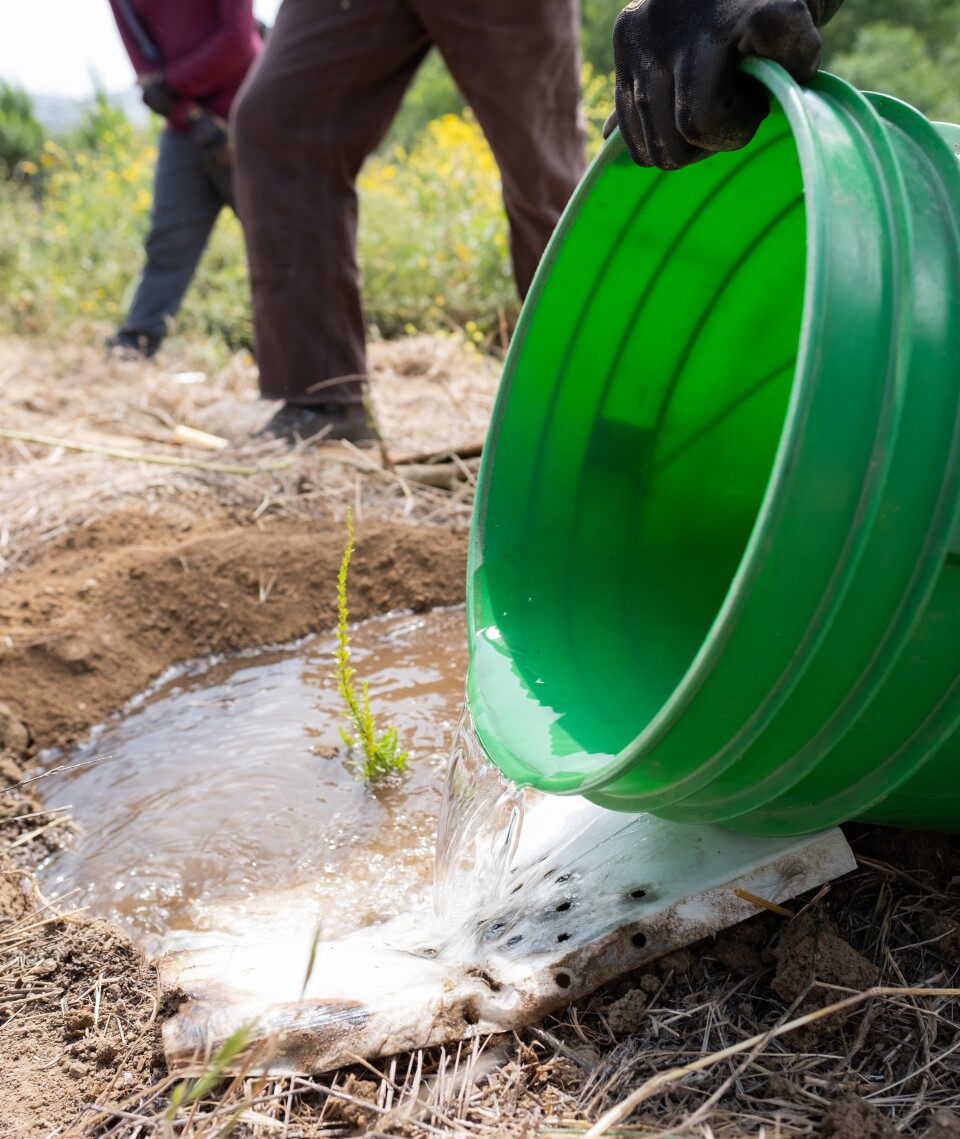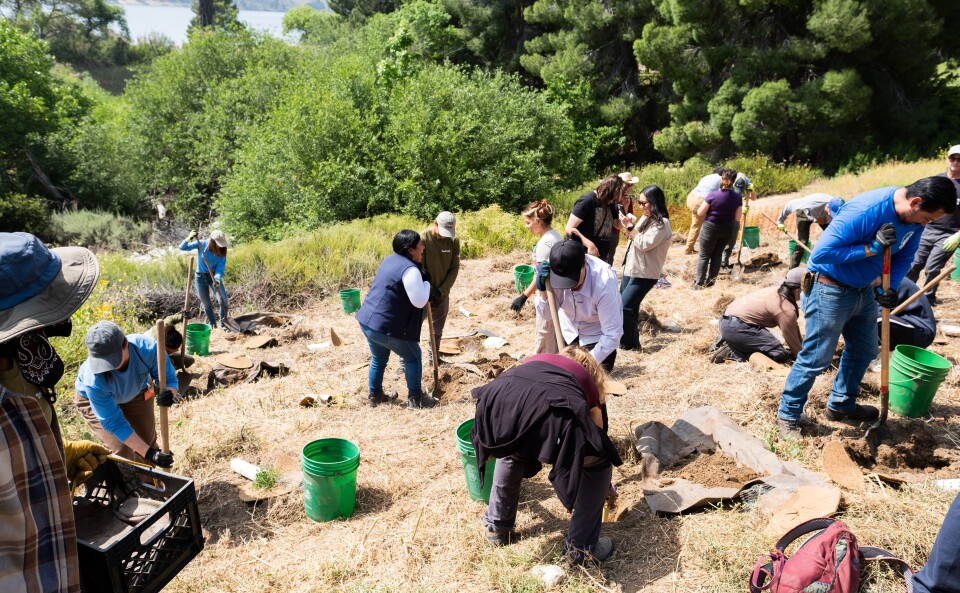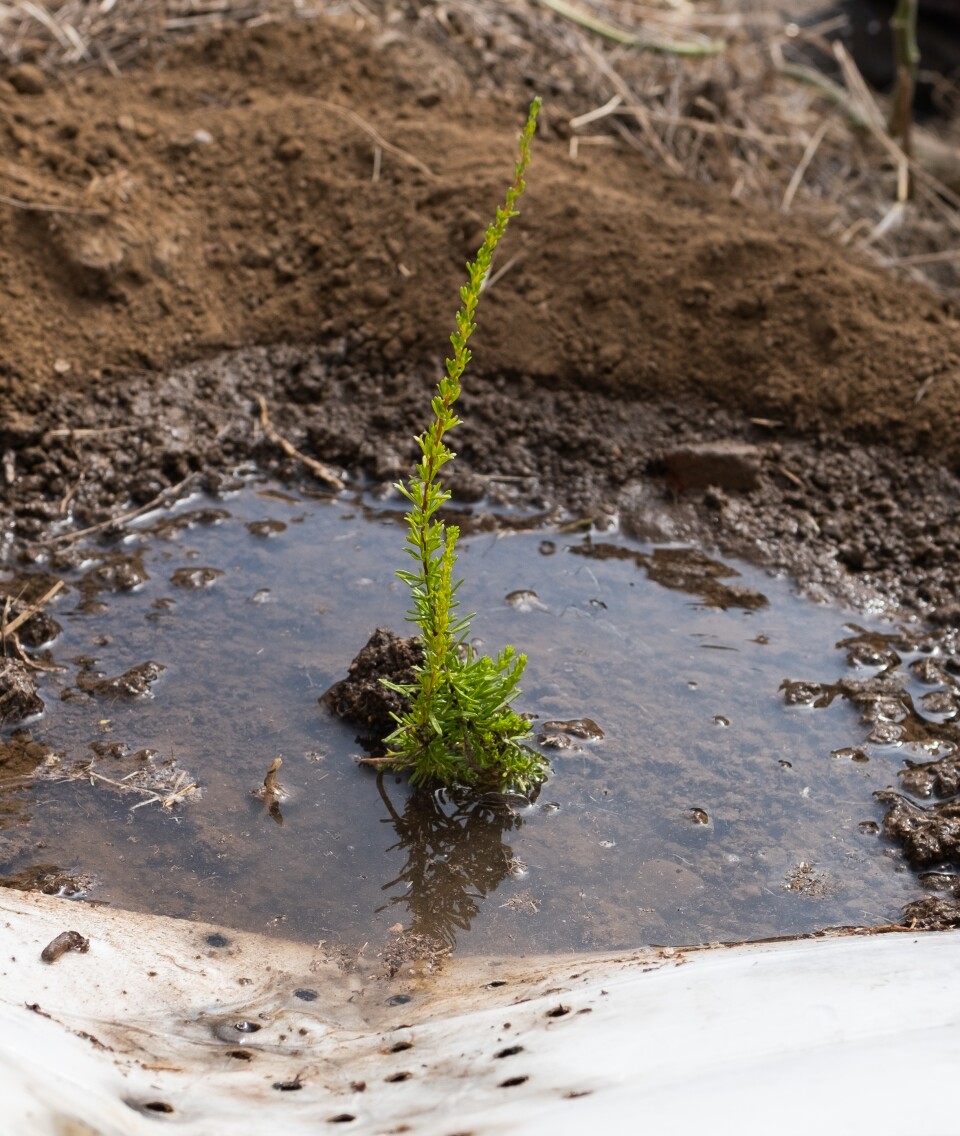Truth matters. Community matters. Your support makes both possible. LAist is one of the few places where news remains independent and free from political and corporate influence. Stand up for truth and for LAist. Make your tax-deductible donation now.
Wildfires Destroyed Swaths Of Angeles National Forest. Can Restoration Efforts Bring It Back?

Last week, a $7 million Angeles National Forest restoration project kicked off on a hillside above Castaic Lake, with volunteers transplanting chamise and pulling invasive mustard.
The five-year effort, funded by a Cal Fire grant, is meant to help restore a variety of ecosystems damaged by wildfires over the past decade. Across many of the locations, native plants have struggled to reestablish through extreme drought years, often outcompeted by invasives which have a tendency to fuel hot flashy fires that can destroy critical native seed banks.

TreePeople is leading the program, which is going to stretch across more than 1,000 acres, from low elevation chaparral scrublands to high elevation conifer forests. They're expecting to transplant 54,000 plants and trees and are working in conjunction with the California Botanic Garden to grow more than 60 species.
"I like to think of it as like we're creating little lifeboats for the native flora and fauna in these areas," said Matthew Loftis, mountain forestry senior program manager with TreePeople.

What makes this program so interesting
The size and scope of the restoration effort is notable, but it's the restoration of chaparral that makes it worth watching closely.
“Historically, nobody worried if chaparral got burned up or even type converted," said Jon Keeley, a scientist with the U.S. Geological Survey who has long studied the impact of wildfires on chaparral plant communities.
"I don't know of any successful restoration programs to date, but that's largely because there haven't been many."

That's surprising given how ubiquitous chaparral is across much of California, particularly along hillsides adjacent to heavily developed areas. Dense and shrubby, it includes plants like manzanita, buckwheat, black sage and laurel sumac. Because of its location, many of us have watched as it's steadily disappeared — often burning as a result of human-caused ignitions, with repeated fires making way for the rise of invasive species like wild oats.
Post-fire restoration projects have often focused on forested areas, like those rife with Douglas Fir, an important resource for the lumber industry. For chaparral, there's no well established restoration playbook.
“I mean there wasn’t an appetite or any funds for it even five years ago,” said Brandon Pratt, a professor of biology at Cal State Bakersfield who's been involved in ongoing chaparral experiments in Piru. The goal of which is to help grow basic restoration knowledge, like how animals including bobcats, quail and pocket mice use restored ecosystems.
“We need some wins," said Pratt, who was excited to learn about the large effort.

The biggest challenges
Those running the 1,000-plus-acre project have a lot to consider, especially because their goal is to mimic a 10-year-old chaparral stand.
Chaparral is wildly diverse, with dozens of potential plants being considered for each spot. The layout and order in which they transplant the plants matters, because if they install something fast growing next to a slower growing species, it could shade out and kill the smaller plant. And just because a plant does well in one chaparral ecosystem doesn't mean it will in the Angeles National Forest.
Sugarbush, for instance.
"In the Santa Monica Mountains, people swear you can plant it anywhere and it'll do great. Because the Santa Monica Mountains are more temperate, you're by the ocean, so it's getting that marine layer, it is happy anywhere. Out here in Angeles, you get a 125-degree day on one sugarbush that's in full sun and it may not make it," said Alyssa Walker, another senior program manager with TreePeople.

A drought and extreme heat could easily wipe out large numbers of plants. Though, they'll be solving for the former by providing supplemental water every four to five weeks. It's a huge effort which involves installing PVC irrigation systems and driving water trucks out to remote locations, and even hand watering in some spots.
"We generally see things get established within 18 months," said Walker. "Let's get them through the first two summers. And if we can do that, they're generally good after that. We'll still keep going in the third summer if we need to. If some are just having a little bit of a hard time."
The nightmare scenario would be if a fire rolls through in the first three to four years, before the native vegetation has developed some level of fire resilience. They'll be removing invasive weeds throughout the length of the program to hopefully help prevent that.









